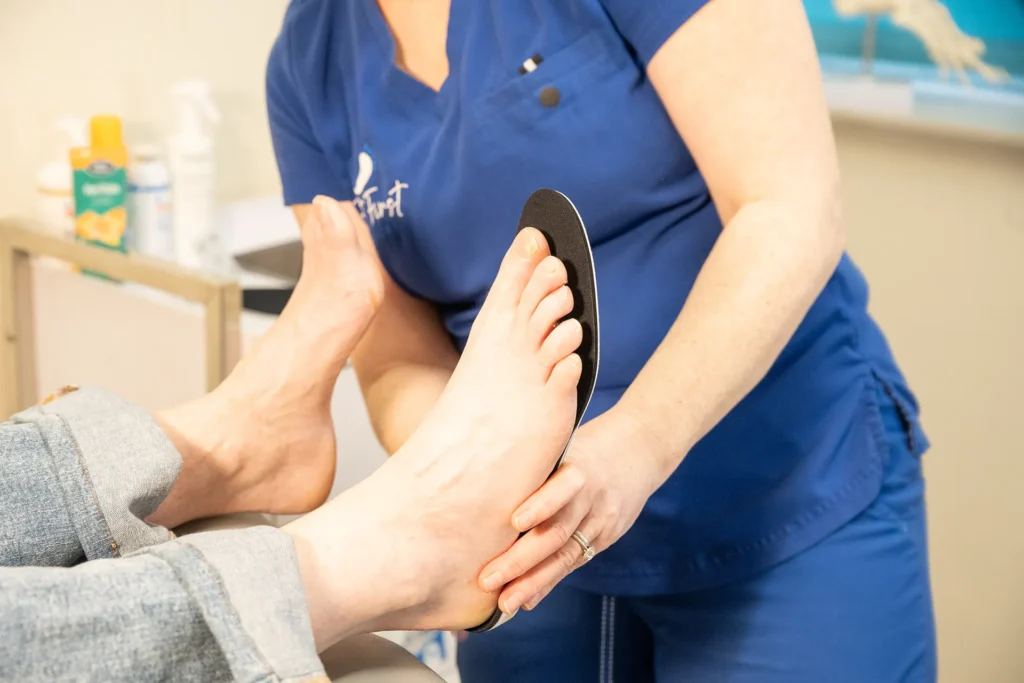
Conditions
The most common injury to the ankle joint is known as lateral ankle sprain or inversion ankle sprain.
The ankle joint is made up of the tibia fibula and the talus, stability around the ankle joint is provided by supporting ligaments.
Ankle sprains tend to occur mostly on the lateral (outside of the ankle where the fibula is located) aspect of the ankle joint.
There are three main ligaments on the lateral ankle – anterior talofibular ligament (attaches fibula to the talus at the front of the ankle joint), calcaneofibular ligament (attaches calcaneus to the fibula) and the posterior talofibular (attaches the fibula to the talus at the back of the ankle joint).
The fibula is a weight-bearing bone that provides stability around the ankle, especially when standing still – the fibula moves downwards stabilising the ankle’s mortise joint.
However, when non-weight-bearing the forefoot tends to fall downward and inward away from the body (plantarflex and inverts). When the foot is in this position tension is placed on the anterior talofibular ligament.
When you pull your toes towards the body (dorsiflexion) tension is then placed on the calcaneofibular ligament.
Both these ligaments work together to support the lateral ankle joint.
Not forgetting the posterior talofibular ligament – this ligament is stronger than the other two and therefore less at risk of injury.
When the foot is in a pointed downwards position there is an increased risk of ankle injury.